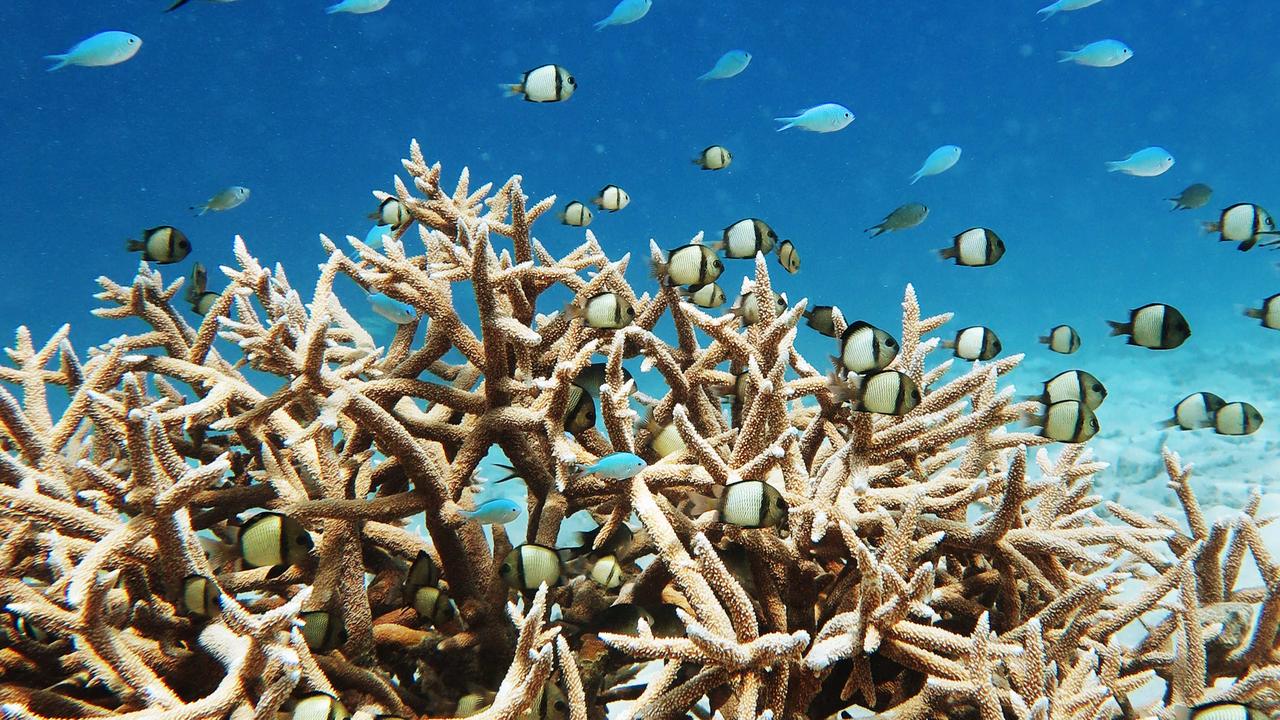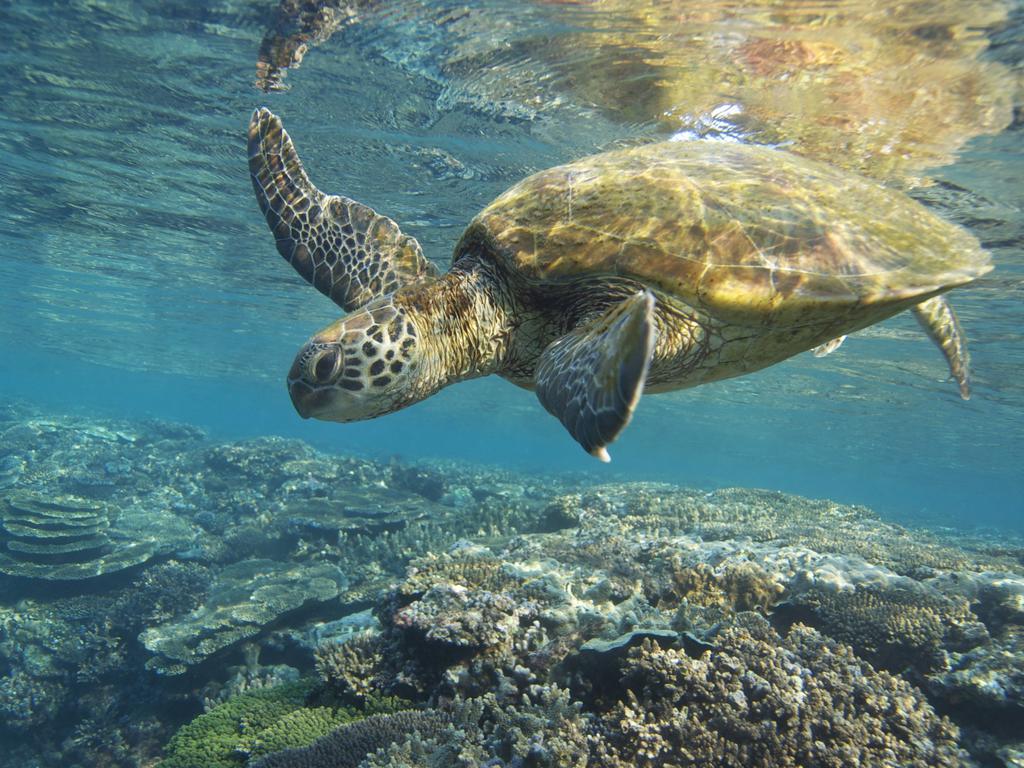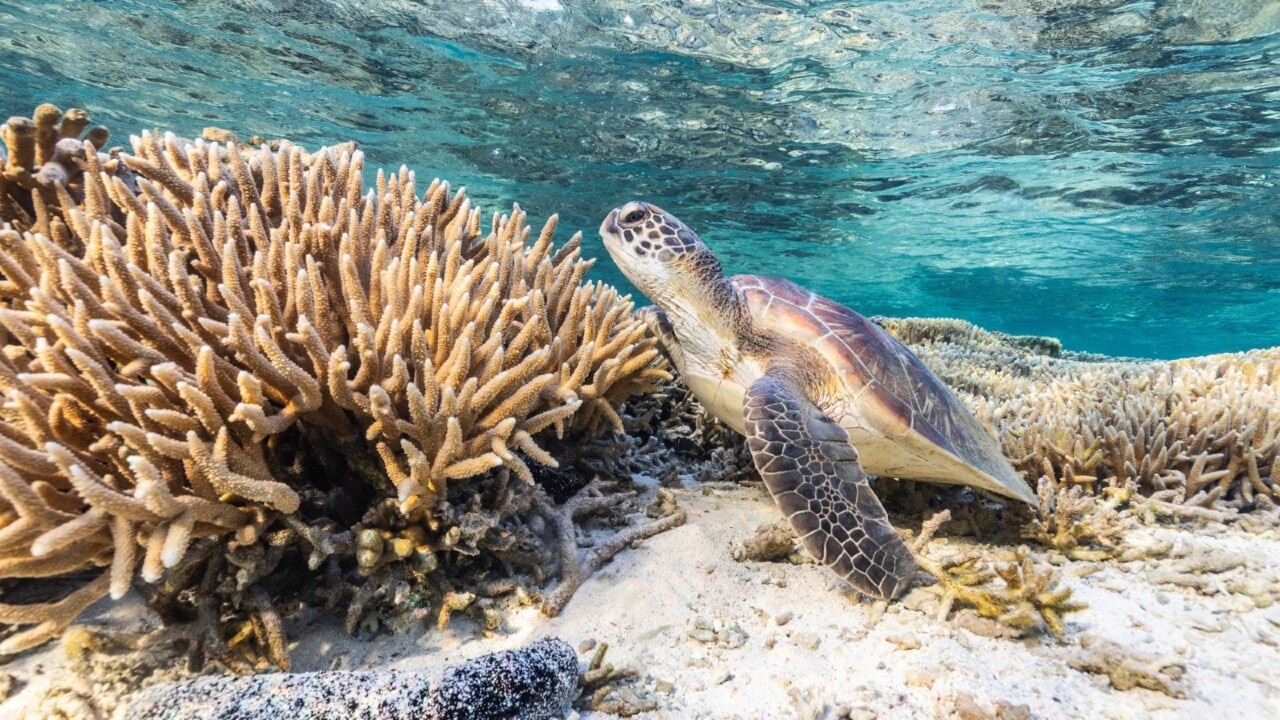Great Barrier Reef conservation gets thumbs up from UNESCO
The planet’s largest coral reef system has not been included on a list of heritage sites in danger from climate change thanks to the actions taken by Australia to protect it

READING LEVEL: ORANGE
Australia’s effort to protect the Great Barrier Reef from climate change has been given a thumbs up by the United Nations (UN).
UNESCO, the UN agency that monitors natural wonders at risk from climate change, has decided the Great Barrier Reef should not be added to a list of world heritage sites in danger.
It had threatened to add the reef to the list unless Australia picked up its game in the fight against global warming.
Last year, experts said the reef was getting damaged from rising sea temperatures caused by climate change and that more needed to be done to protect it.
Since Anthony Albanese became Prime Minister in May last year, the government has committed $4.4 billion towards conservation.
UNESCO said the Albanese government had taken positive steps to protect the reef and that even though the reef is still under “serious threat” from climate change, it wanted to give Australia more time to boost its protection.

As a result, the Great Barrier Reef won’t be included in this year’s World Heritage Committee meeting in September, where climate experts discuss natural wonders most in danger because of climate change.
Instead, they will check in with Australia next year to see if anything else needs to be done to protect the reef.
THE GREAT BARRIER REEF IS STILL AT RISK
In the meantime, UNESCO will be watching the reef very carefully to make sure it is in good health.
They have also given Australia some very important homework to do. Australia must hand in a written report that shows how UNESCO’s instructions have been put in place in order to protect the reef.
UNESCO has warned that they will put the Great Barrier Reef on the list of natural places in danger if Australia doesn’t do enough to protect it from climate change.

WHAT IS WRONG WITH THE GREAT BARRIER REEF?
Off the coast of Queensland, the Great Barrier Reef is 2200km long and is the largest coral reef system on Earth.
Climate change is threatening the Great Barrier Reef’s ecosystem, which could affect the health of the ocean and the whole planet.
Since 2016, the Great Barrier Reef has been hit by three mass bleaching events, which happens when corals get too hot and expel the algae living in them. The once colourful coral then turns white.
Last year, UNESCO’s World Heritage Committee threatened to put the reef on a list of “in danger” global heritage sites unless serious action was taken by Australia to protect it.
Tourism groups in Australia wanted to avoid the listing. They believed the “in danger” classification would make people think the whole reef was dying, when many parts of the massive reef remain healthy.
WHAT IS AUSTRALIA DOING TO PROTECT THE REEF?
Australia is helping to protect the Great Barrier Reef by cutting back on fishing in the area. It is also working to cut down on water pollution and has a target to reduce carbon emissions 43 per cent by 2030.

POLL
GLOSSARY
- monitors: measures and studies
- heritage: something of importance from the past that should be protected
- committed: pledged or promised
- conservation: the act of protecting things or creatures from danger
- ecosystem: the way plants and creatures interact with each other and maintain a healthy balance
- bleaching: when the colour gets stripped from something
- committee: a group of people working to achieve agreed goals
- classification: a label
- emissions: pollution being put out into the atmosphere
- expel: spit out
EXTRA READING
Great Barrier Reef found ‘in danger’
Red kangaroos rescued by AI
Dragons feared extinct found alive in Australia
QUICK QUIZ
1. How long is the Great Barrier Reef?
2. How many mass bleaching events have occurred on the reef since 2016?
3. What causes coral bleaching?
4. What “homework” does Australia have to do?
5. What are two things the Australian government is doing to protect the reef?
LISTEN TO THIS STORY
CLASSROOM ACTIVITIES
1. Protect our reef
The United Nations are keeping a close eye on Australia to ensure we are doing enough to save the Great Barrier Reef from becoming “in danger.”
Work with a partner and come up with a slogan to raise awareness and urge people to help protect and save our world-renowned Great Barrier Reef.
Your slogan should be short, sharp and catchy so that it captures the attention of people all around Australia.
Time: allow 25 minutes to complete this activity
Curriculum Links: English, Science, Personal and Social, Critical and Creative Thinking
2. Extension
Why is it in Australia’s interest to stop the reef from being listed as “in danger” on the United Nations’ World Heritage List?
If it does get listed on the “in danger” registry, what does that mean for us and for the Great Barrier Reef?
Time: allow 10 minutes to complete this activity
Curriculum Links: English, Science, Critical and Creative Thinking
VCOP ACTIVITY
Protecting the Great Barrier Reef
1. Read the article about Australia's efforts to protect the Great Barrier Reef from climate change.
2. Imagine you are a reporter for a nature magazine, and your job is to write an article about the Great Barrier Reef and the steps taken by Australia to protect it. You can choose to write the article individually or with a partner.
3. Your article should include the following points:
a. Explain what the Great Barrier Reef is and why it is essential for our planet.
b. Describe how climate change is affecting the reef and the problems it is facing, such as mass bleaching events.
c. Discuss the actions taken by the Australian government to protect the reef, such as cutting back on fishing, reducing water pollution, and aiming to reduce carbon emissions.
d. Mention the United Nations' (UN) decision not to add the Great Barrier Reef to the list of world heritage sites in danger and why they made this decision.
e. Explain UNESCO's instructions to Australia and the importance of following them to protect the reef from further damage.
f. Conclude your article with a message about the significance of preserving natural wonders like the Great Barrier Reef for future generations.
4. Use your own words and be creative in how you present the information. You can include drawings, diagrams, or even a fictional interview with a marine scientist to make your article more engaging.
5. If you are working with a partner, take turns discussing your ideas and combining them to create a joint article. Make sure both of you contribute to the writing and designing of the article.
6. After completing your article, you can share it with your family or friends and discuss the importance of protecting the Great Barrier Reef and other precious natural wonders.
Remember to have fun while writing your article and use your creativity to showcase the beauty and significance of the Great Barrier Reef!


